 W
WBetta falx is a species of gourami endemic to the island of Sumatra in Indonesia. It is an inhabitant of acidic, nearly stagnant water, where it can be found amongst the vegetation along the banks. This species grows to a length of 3.5 cm (1.4 in).
 W
WCorydoras kanei is a small species of catfish from the family Callyichthydae endemic to Brazil where it is found in the Negros River basin. It is externally similar to Corydoras atropersonatus, but its spots are denser and unlike the former, it has caudal markings - markings on its tail fins. Breeding can be accomplished by feeding a mixture of live foods and catfish pellets, after which frequent cold water changes can trigger them to spawn. A gravid female will lay around 60 eggs; heavy oxygenation of the water is likely to be more efficacious at saving fry than using methylene blue. Fry grow slowly and reach around 2 cm after 8 months. It is not recommended to add different fish into the fry rearing tank. They do not mind lower temperatures and can be kept with species of fish that are endemic to low-temperature habitats, such as Sewellia lineolata.
 W
WDanio kyathit is a small, schooling species of fish in the family Cyprinidae. It is endemic to the upper reaches of Irrawaddy River near Myitkyina in northern Myanmar. Described in 1998, it is closely related to the better-known zebrafish or zebra danio, D. rerio.
 W
WDiplotaxodon apogon is a species of fish in the family Cichlidae. It is endemic to Lake Malawi. The IUCN regard this taxon as a junior synonym of Diplotaxodon ecclesi.
 W
WDiplotaxodon macrops is a species of haplochromine cichlid which is endemic to Lake Malawi. It is found throughout the lake in Malawi, Mozambique, and Tanzania. Within Lake Malawi it is abundant near the lake bed over rock shelves. It appears to be a plankton eating species that feeds on insect larvae, crustaceans, and diatoms.
 W
WDunckerocampus boylei is a species of marine fish of the family Syngnathidae. It is found in the Red Sea, Mauritius, and Indonesia, but it is thought to be widespread throughout the Indian Ocean. It lives in coastal caves and crevices at depths of 20–40 metres (66–131 ft), where it can grow to lengths of 16 centimetres (6.3 in). It feeds on small crustaceans that grow on other fish species. This species is ovoviviparous, with males carrying eggs and giving birth to live young. The specific name honours Bill Boyle, an underwater fish photographer who drew the attention of Kuiter to the species.
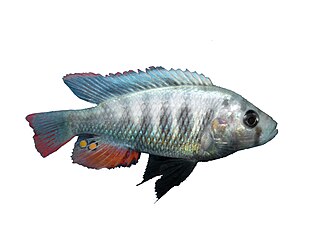 W
WHaplochromis pundamilia is a species of cichlid endemic to the Tanzanian portions of Lake Victoria. This species can reach a length of 12.4 centimetres (4.9 in) SL.
 W
WHemimyzon nanensis is a species of hillstream loach in the genus Hemimyzon. It occurs in the Chao Phraya basin, Thailand.
 W
WThe Kisaki nothobranch is a species of killifish in the family Nothobranchiidae. It is endemic to Tanzania. Its natural habitat is seasonal pools.
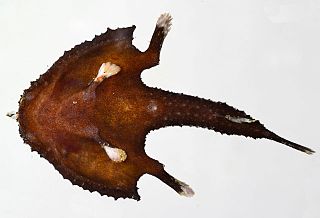 W
WMalthopsis gnoma is a marine fish, which is found at depth 90–475 m in the western central Atlantic, at the north coast of Cuba, near Puerto Rico and the Virgin Islands, and at the Caribbean coast of Central America. It reaches a length of 6.1 cm (2.4 in).
 W
WPao abei is a species of freshwater pufferfish from the Mekong, Chao Phraya the Mae Klong river basins in Southeast Asia.
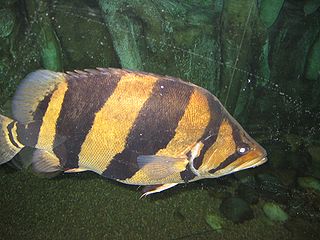 W
WThe Siamese tigerfish, also known as the Siamese tiger perch, is a critically endangered Asian fish native to the Chao Phraya, Mae Klong and Mekong basins. It has vertical yellow and black stripes running the length of its body. The dorsal fin has a spiny appearance. Siamese tigerfish grow to 40 cm (16 in) in standard length.
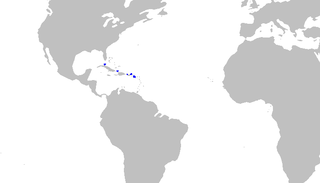 W
WSpringer's sawtail catshark is a little-known species of catshark, belonging to the family Scyliorhinidae, found in waters 457–699 m (1,499–2,293 ft) deep off the islands of the Antilles, from Cuba to the Leewards. A small, slim-bodied species reaching a length of 48 cm (19 in), the Springer's sawtail catshark can be identified by its color pattern of horizontal dark stripes in front of the first dorsal fin, and dark dorsal saddles behind. It is additionally characterized by the presence of saw-toothed crests, made of enlarged dermal denticles along both the dorsal and the ventral edges of the caudal fin. The Springer's sawtail catshark is oviparous. The International Union for Conservation of Nature (IUCN) presently lacks the information to assess its conservation status.
 W
WTembeassu marauna is a species of weakly electric knifefish in the family Apteronotidae and the only member of its genus, known only from three specimens collected from the upper Paraná River, Brazil, in 1965. This fish can be identified by fleshy extensions at the tips of its upper and lower jaws, with the upper extension bearing a patch of extra teeth. The function of these unique structures is unknown, but may relate to feeding. Apparently a specialized inhabitant of deep riverine environments, T. marauna may be endangered by extensive dam construction in the upper Paraná region, if not already extinct.
 W
WTerelabrus rubrovittatus, also known as the white-striped hogfish is a species of wrasse native to the central western Pacific Ocean. It occurs on outer reefs in deeper waters at depths from 50 to 100 m. This species grows to 12 cm (4.7 in) in total length.
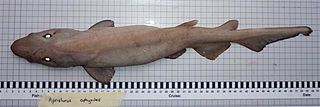 W
WThe white ghost catshark is a shark of the catshark family Scyliorhinidae found in deep water in the northeast Atlantic between latitudes 57°N and 58°N. A deep-water catshark known from the eastern North Atlantic from depths of 1,014 to 1,800 m, it is known from only a limited number of specimens. It reaches a maximum of 54 cm or 1.7 ft total length which is a medium size for the Apristurus genus.
 W
WZoogoneticus tequila, Tequila splitfin or simply Tequila fish, is a species of goodeid fish from Mexico. The specific epithet, tequila, derives from the Tequila Volcano, which looms near the type locality.